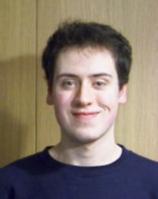George Parry
In recent years the use of microfluidic devices within life science has grown rapidly. As the world faces further problems from anti-microbial resistance, it seems prudent to attempt to solve these problems in a wide variety of ways, including by the application of techniques from physical sciences to better observe and understand the dynamics of infections. Microfluidic devices offer a practical and effective way to apply these techniques.
In my MSc-R here at the University of Warwick, I established a live-imaging setup to study infections conducted inside microfluidic devices. As others have done, I have established epithelial cell monolayers inside a device. However, I have also infected these monolayers with antibiotic-resistant strains of S. aureus and have made observations of the process and consequences of infection. By making observations, it is possible to use computational techniques to characerise these infections quantitatively.
As an Early Career Fellow I am continuing to refine this setup by micropatterning the inside of the microfuidic devices used, with the express purpose of more clearly observing the host-pathogen interaction in an infection event. Real-time imaging will be used to make observations of the physical characteristics of infection events when resistant strains and antibiotics are employed.

